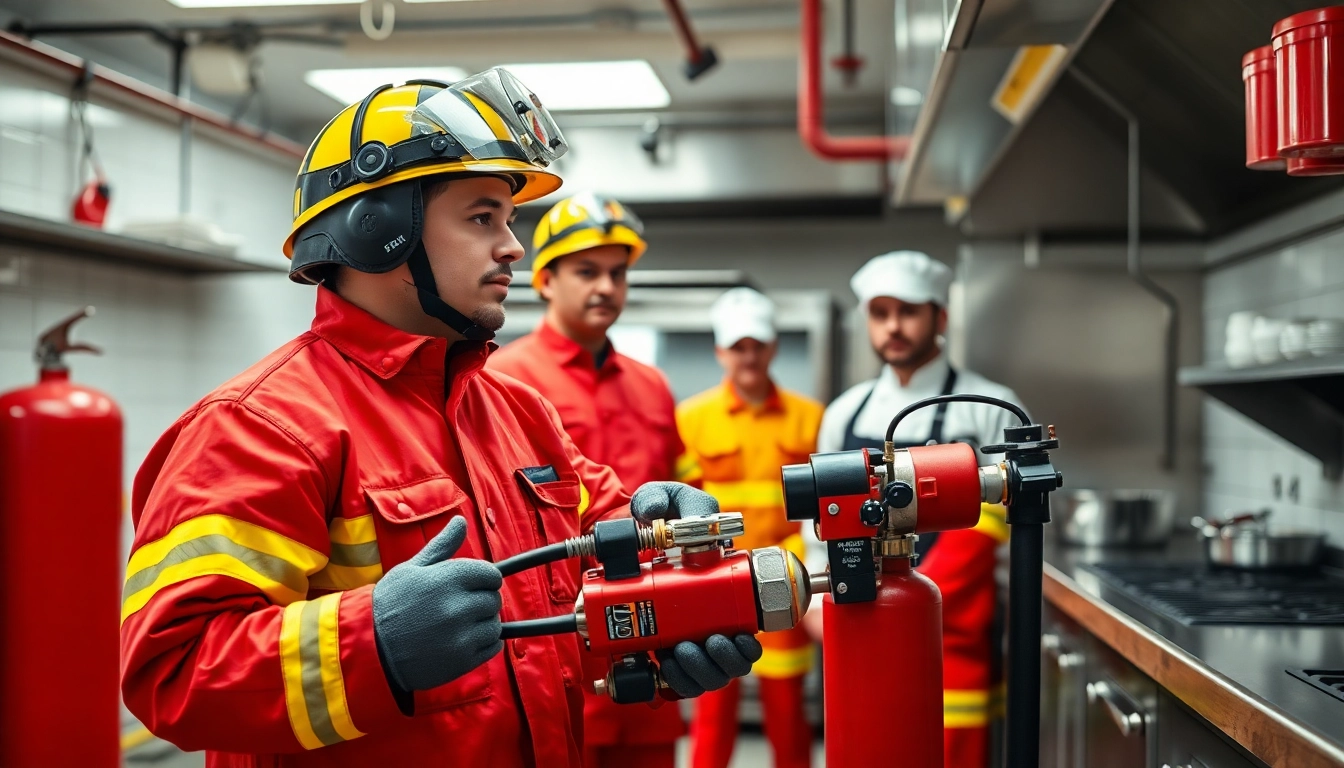
Understanding Fire Suppression Service
What is Fire Suppression Service?
Fire suppression service refers to a set of techniques, systems, and practices designed to detect, control, and extinguish fires in a timely manner. This encompasses not only the installation and maintenance of fire suppression systems, but also strategies aimed at reducing the risk of fire outbreaks. A comprehensive fire suppression service is crucial for safeguarding lives, property, and the environment. The services may include regular inspections, equipment upgrade, and comprehensive fire safety training for staff and management.
Importance of Fire Suppression Service
Establishing a robust Fire Suppression service is essential for both residential and commercial facilities. Fires can escalate rapidly, leading to catastrophic outcomes if not addressed quickly. Having an effective fire suppression service reduces the potential for loss of life and significant property damage, ensuring compliance with fire safety regulations and insurance requirements. Additionally, it enhances the overall safety culture in organizations, reassuring employees and visitors that their safety is a priority.
Key Components of a Fire Suppression Service
A fire suppression service comprises several key components that collectively ensure fire safety:
- Detection Systems: These include smoke detectors, heat detectors, and fire alarm systems that alert occupants and authorities in case of a fire.
- Suppression Systems: This category covers various systems such as sprinklers, foam systems, and chemical suppression agents tailored to specific fire hazards.
- Fire Safety Training: Regular training sessions for staff on how to respond to fire emergencies, proper use of fire extinguishers, and evacuation procedures are critical.
- Emergency Response Plans: Preparedness plans detailing procedures to be followed during and after a fire incident significantly enhance the effectiveness of fire suppression efforts.
Types of Fire Suppression Systems
Water-Based Fire Suppression Systems
Water-based fire suppression systems are among the most common methods used to extinguish fires. These systems employ water to cool the fire and reduce the chances of ignition. There are various types of water-based systems:
- Sprinkler Systems: Automated systems that release water when a fire is detected. They are designed to cover large areas and are often used in commercial facilities.
- Standpipe Systems: These vertical pipes provide water for use by fire departments and on-site staff during emergencies.
- Deluge Systems: These are designed for high-hazard areas and release large amounts of water from open nozzles upon activation.
Chemical Fire Suppression Systems
Chemical fire suppression systems utilize specialized agents that interrupt the chemical reactions occurring within a fire. These systems are particularly effective for flammable liquids and electrical fires. Common agents include:
- Dry Chemical Extinguishers: These contain substances like monoammonium phosphate that prevent flames from spreading.
- Wet Chemical Systems: Primarily used in commercial kitchens, these systems release a fine mist that cools and smothers flames.
Foam and Gas Fire Suppression Systems
Foam fire suppression systems are designed to combat flammable liquid fires by creating a barrier that prevents oxygen from reaching the flames.
- Foam Systems: These systems discharge foam concentrate which envelops the fire, effectively suppressing it.
- Inert Gas Systems: Using gases such as nitrogen or argon, these systems displace oxygen around the fire, making it impossible for combustion to continue.
Best Practices for Fire Suppression Service
Regular Maintenance of Systems
Regular maintenance of fire suppression systems is critical to ensure their effectiveness. This includes periodic inspections, testing of alarm systems, and ensuring that fire extinguishers are charged and accessible. Developing a proactive maintenance schedule can prevent the deterioration of systems and enhance reliability during emergencies.
Proper Installation Techniques
The success of fire suppression systems largely hinges on proper installation. Engaging certified professionals who adhere to local and national fire codes ensures that systems are correctly installed and function as intended. Accuracy in installation can significantly impact response times and overall effectiveness.
Training Staff on Fire Safety
Training staff on fire safety protocols fosters a culture of preparedness and responsiveness. Conducting regular fire drills helps ensure that everyone knows their roles in a fire emergency. Training sessions should cover the appropriate use of fire extinguishers, evacuation procedures, and familiarity with emergency exits.
Choosing a Fire Suppression Service Provider
Evaluation Criteria for Selecting a Provider
When selecting a fire suppression service provider, several evaluation criteria should be taken into account:
- Experience and Certification: Verify that the provider has relevant experience and holds necessary certifications, indicating their expertise in fire suppression services.
- Reputation: Research client testimonials and case studies to gauge the provider’s reliability and effectiveness.
- Comprehensive Services: Choose a provider that offers a full range of services from installation to maintenance and training.
Questions to Ask During Consultations
During the selection process, asking targeted questions can clarify the provider’s capabilities:
- What types of fire suppression systems do you specialize in?
- Can you provide references from other clients?
- What is your process for system inspections and maintenance?
Understanding Service Contracts
It’s essential to thoroughly read and understand the terms of any service contracts. Look for clauses regarding maintenance frequency, emergency response times, and cancellation policies. Ensure there are no hidden fees and that the scope of service aligns with your fire safety needs.
Measuring Effectiveness of Fire Suppression Service
Key Performance Indicators
Establishing key performance indicators (KPIs) is crucial for assessing the effectiveness of fire suppression services. Common KPIs include response times, system uptime, maintenance completion rates, and successful drill outcomes. Regularly reviewing these metrics can help identify areas for improvement.
Feedback from Fire Safety Drills
Feedback from fire safety drills is invaluable for assessing preparedness. Gathering input from participants on the clarity of instructions, response times, and any issues encountered can help refine training and improve the overall fire safety strategy.
Adjustments Based on Assessments
Based on assessments of KPIs and feedback, organizations should remain flexible to adapt and enhance their fire suppression strategies. Continuous improvement through adjustments can address emerging challenges and ensure ongoing compliance with safety regulations.